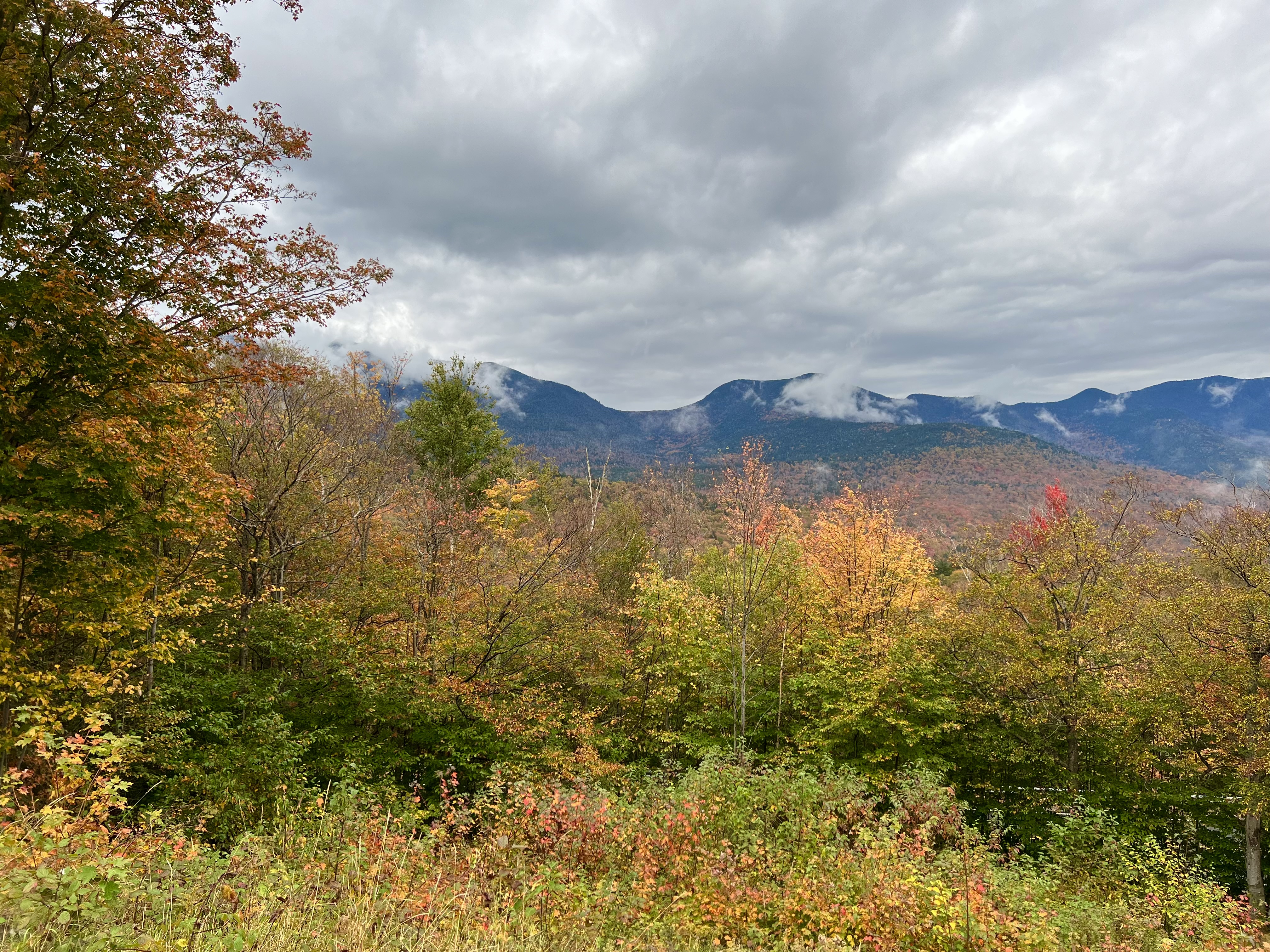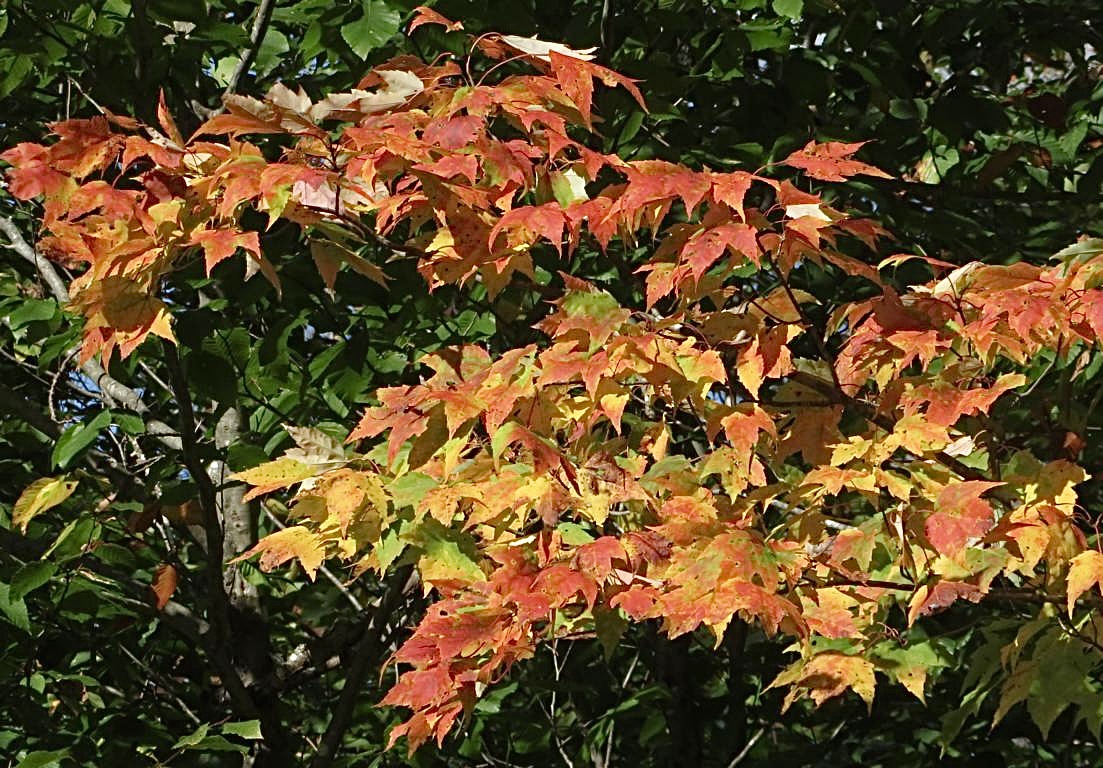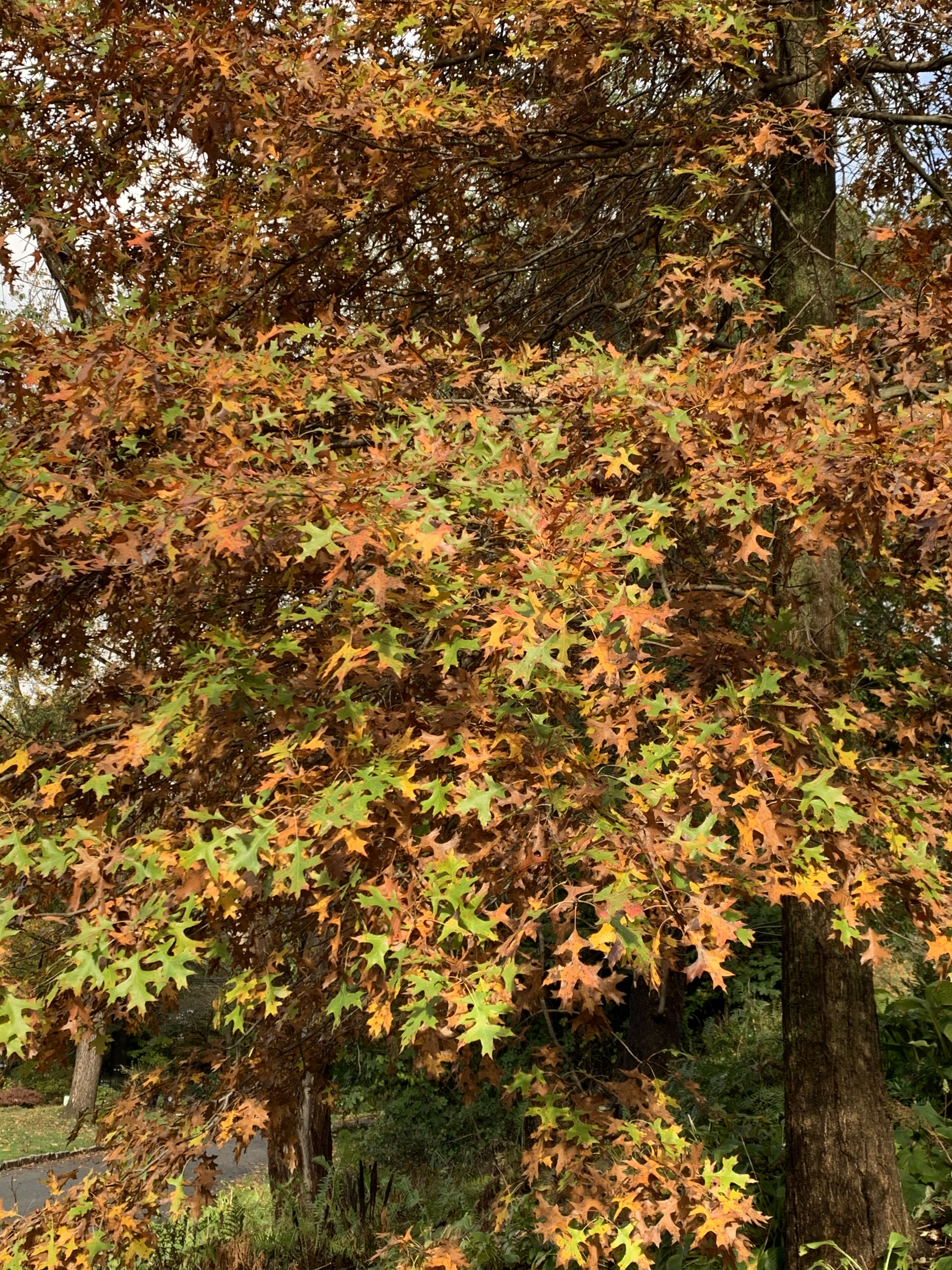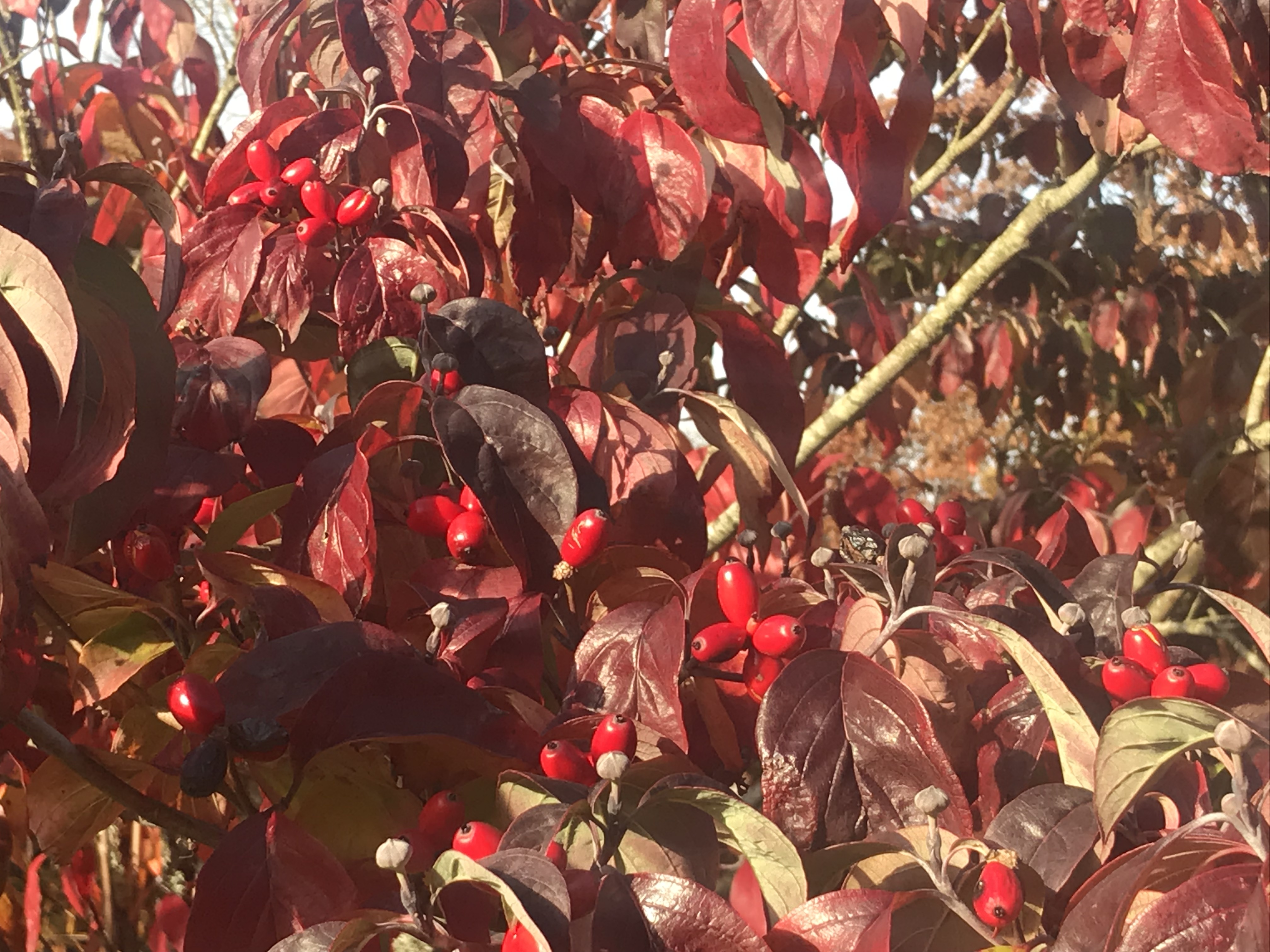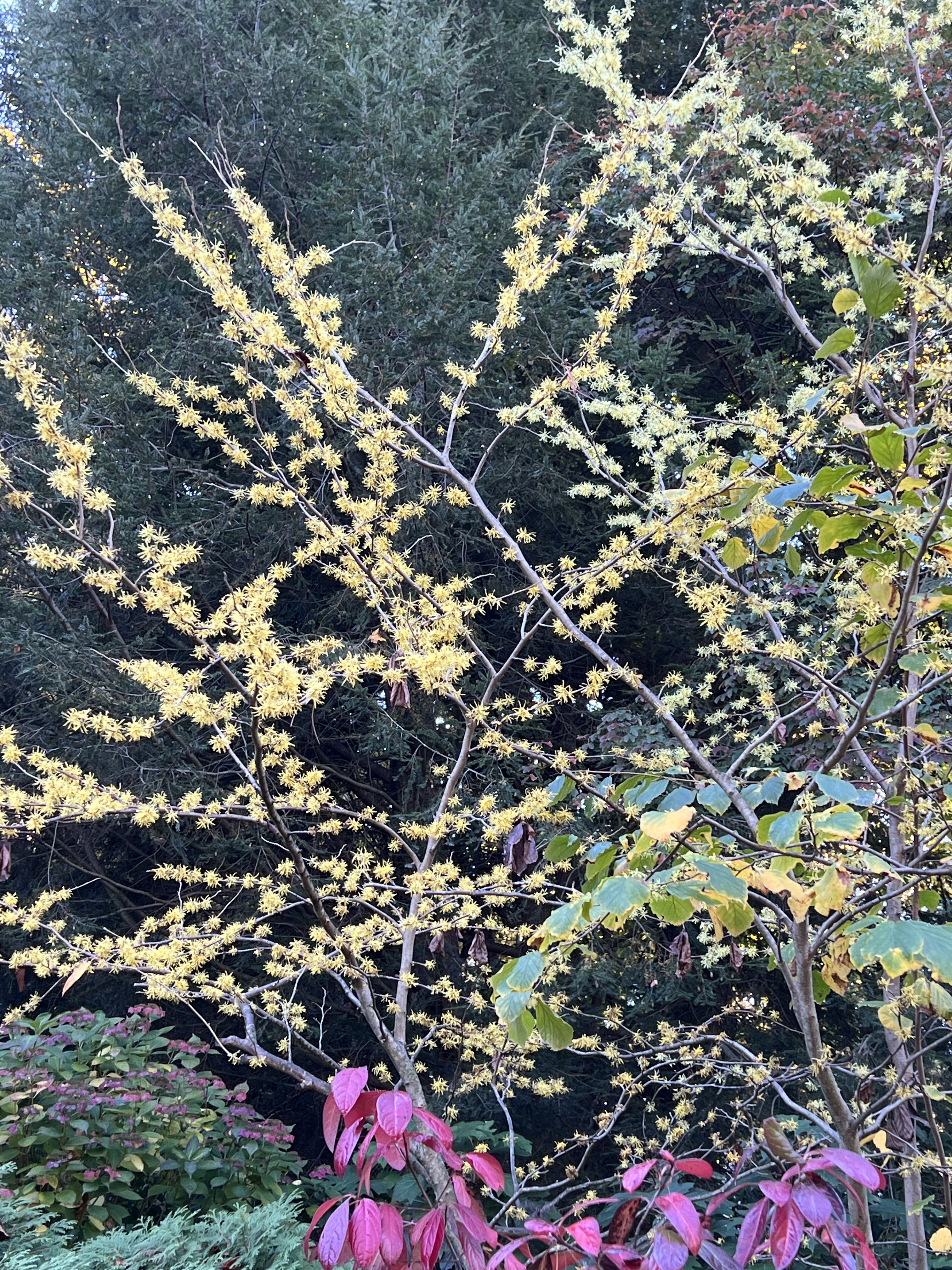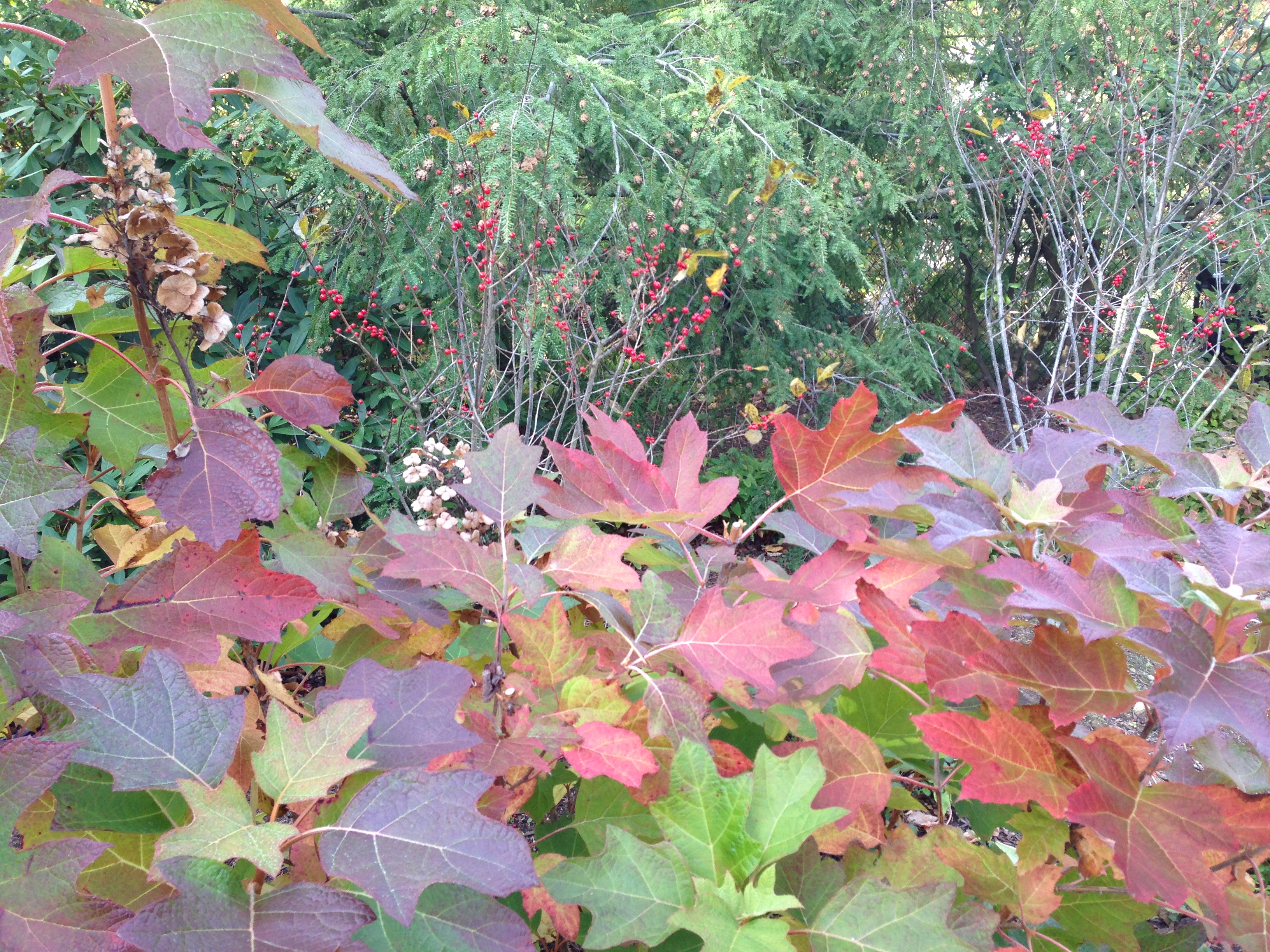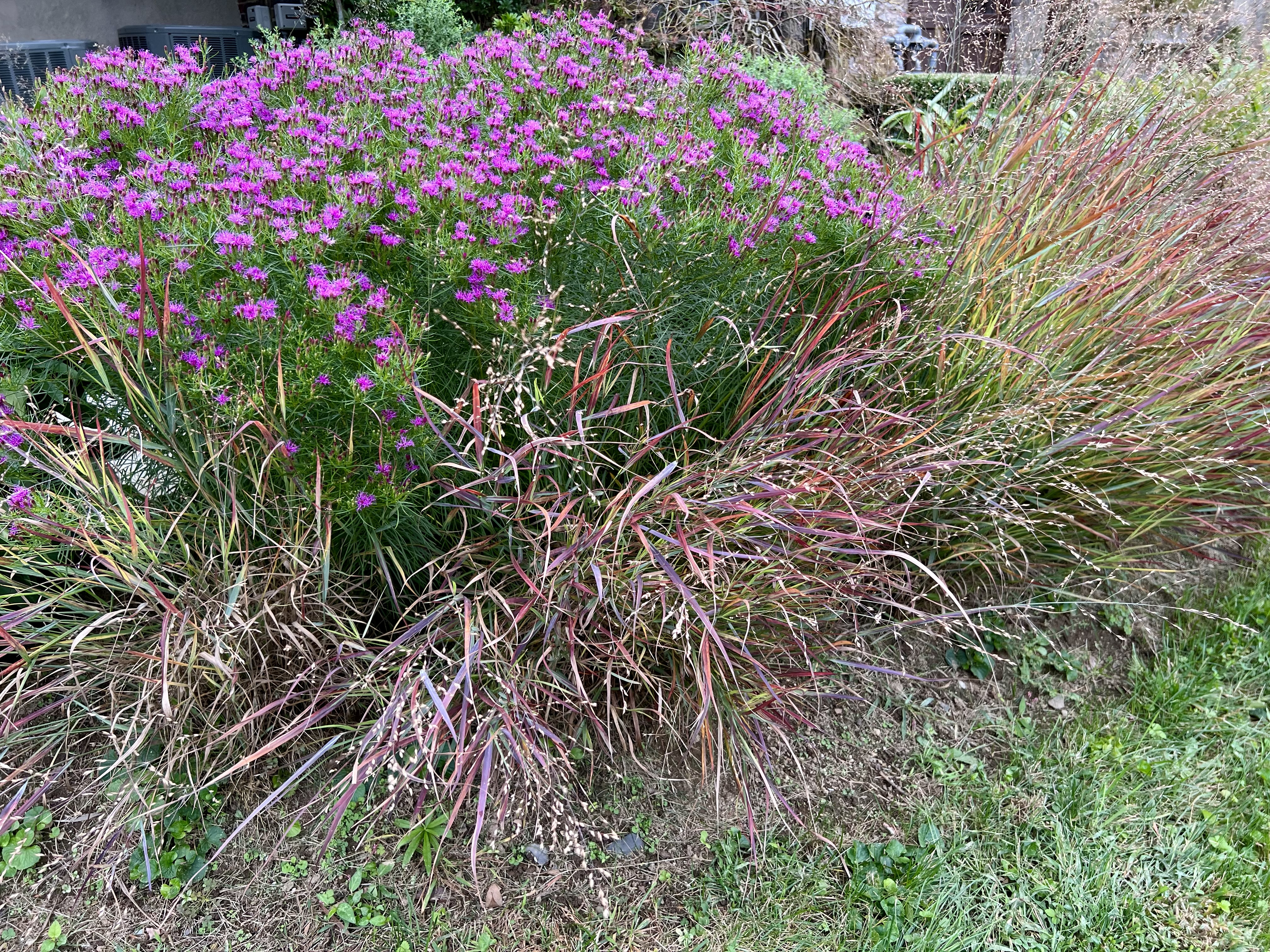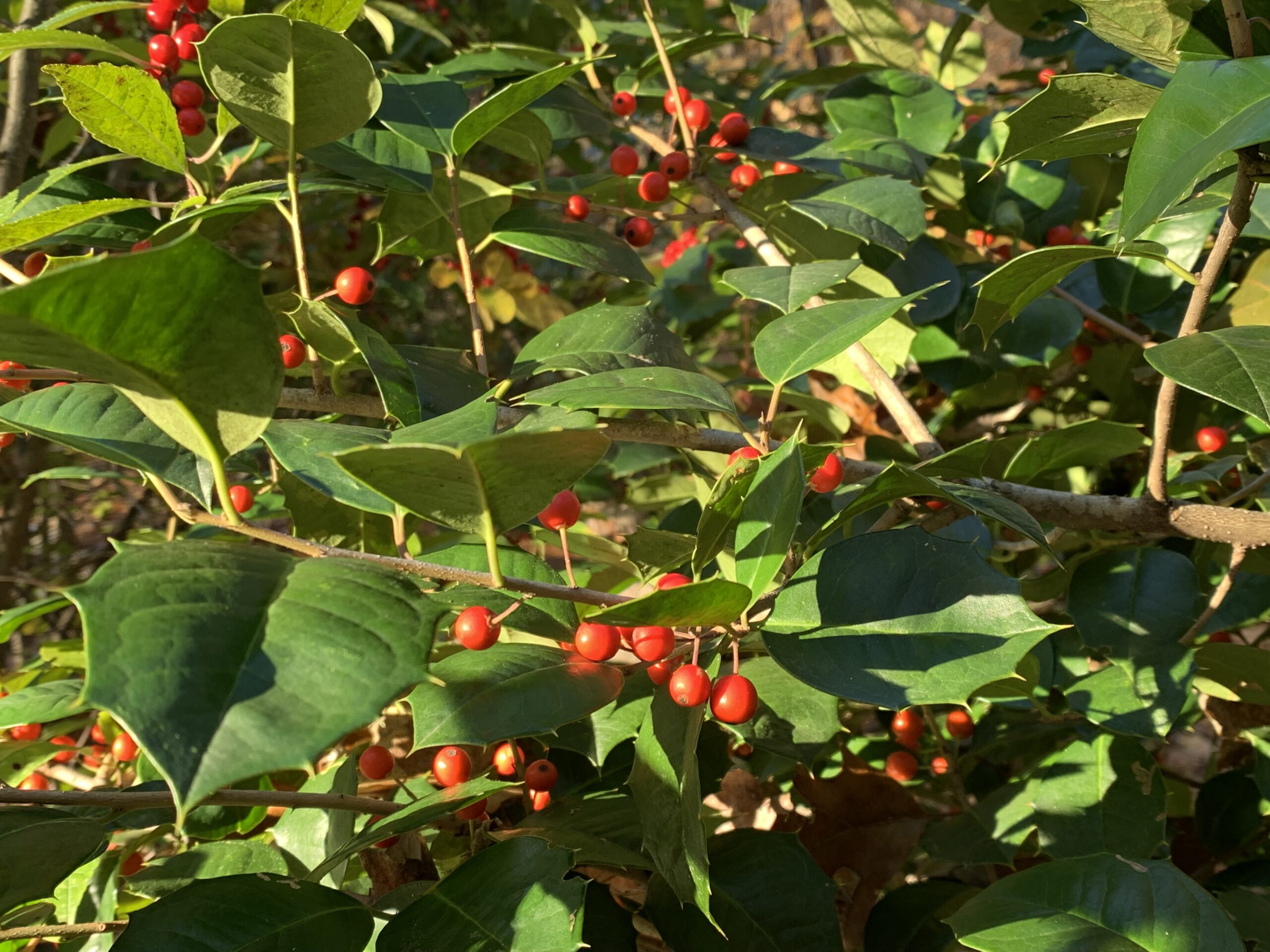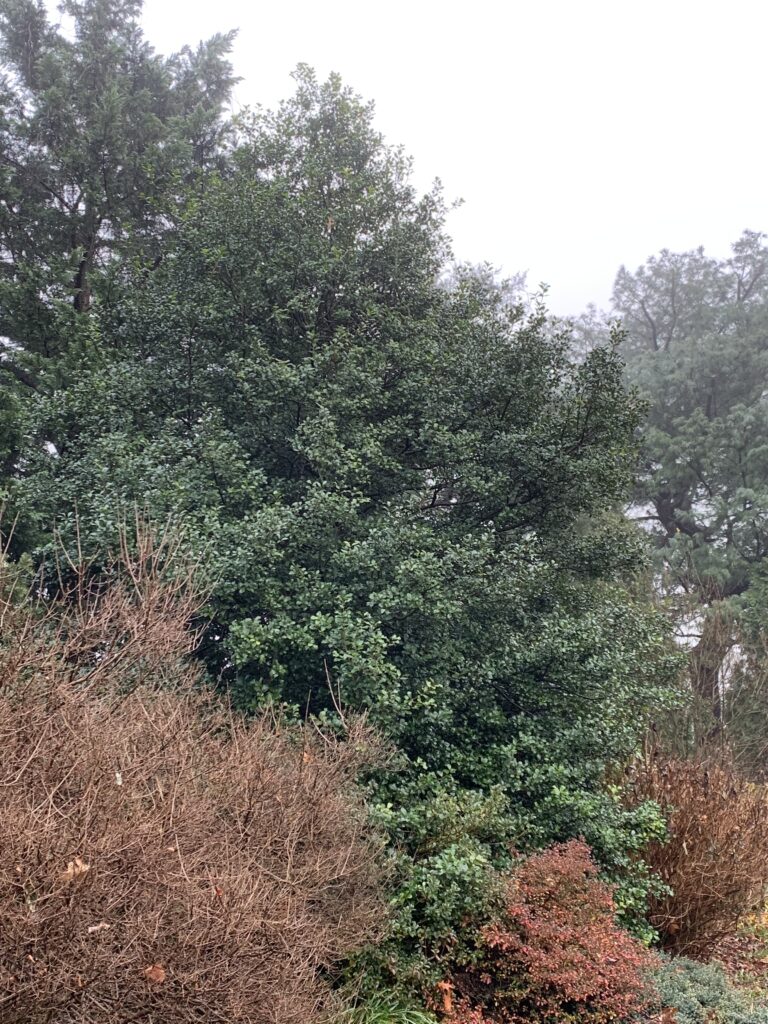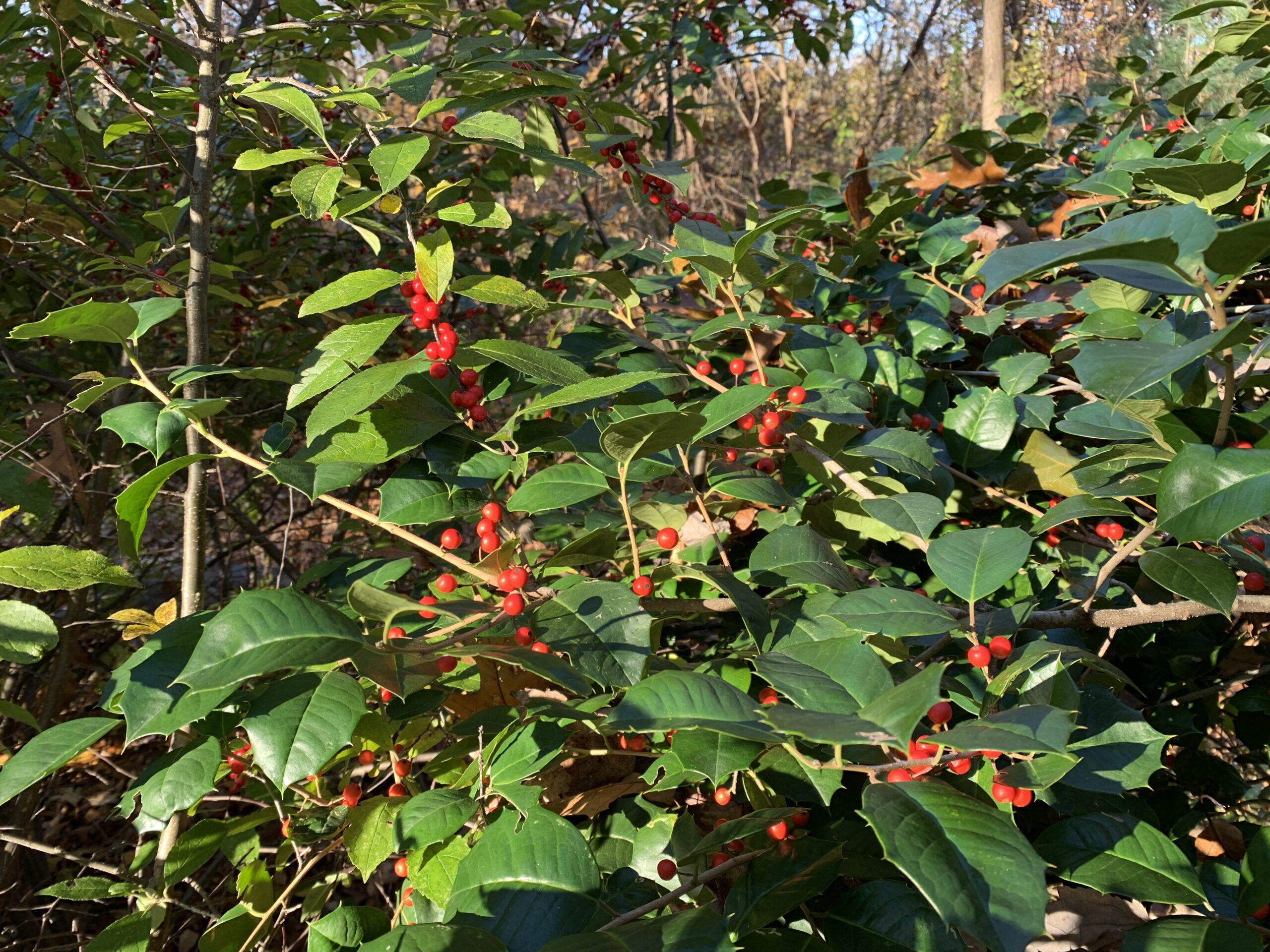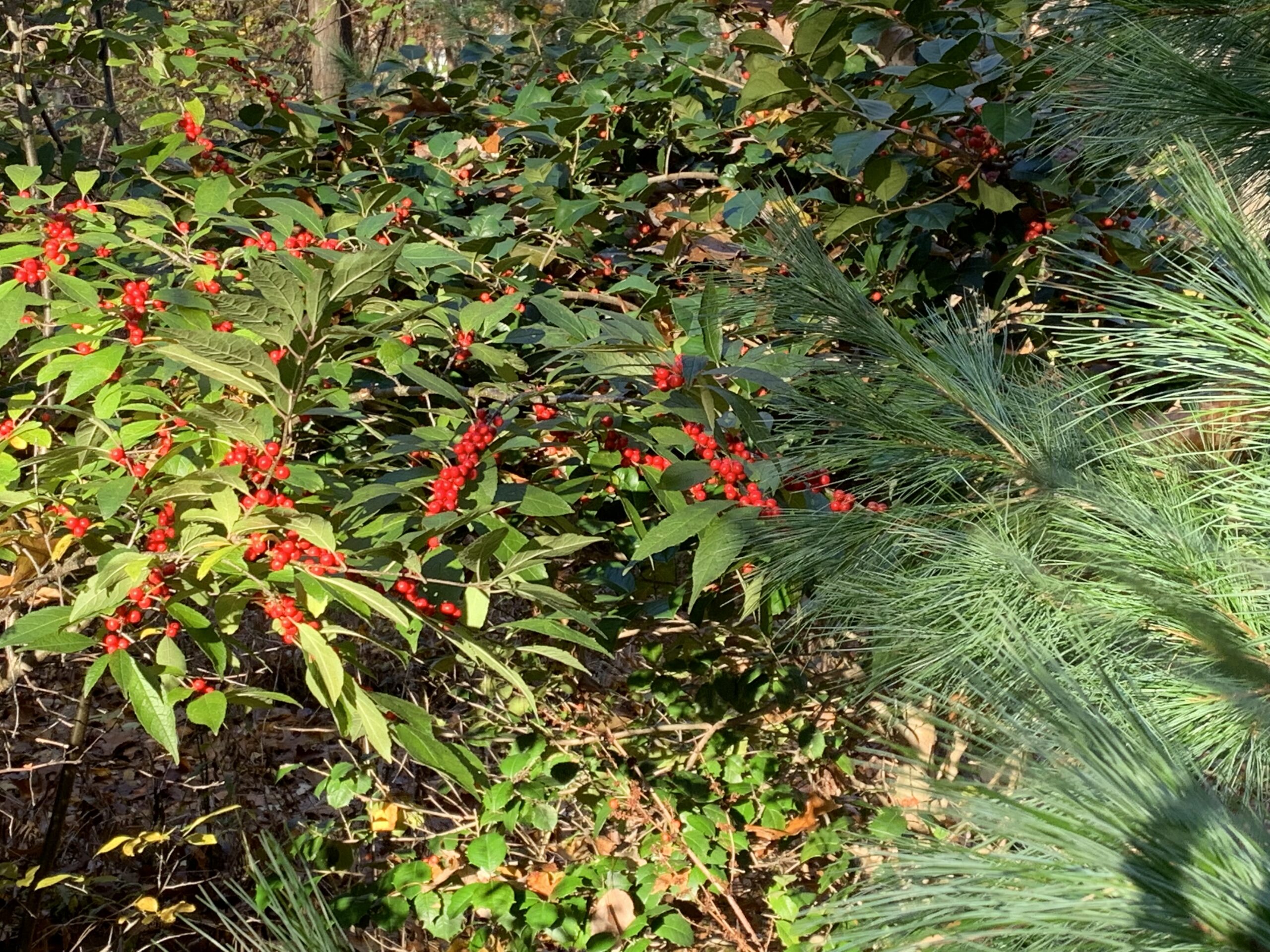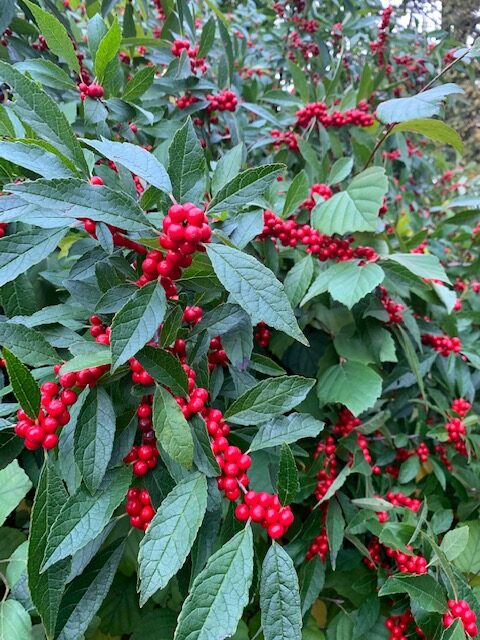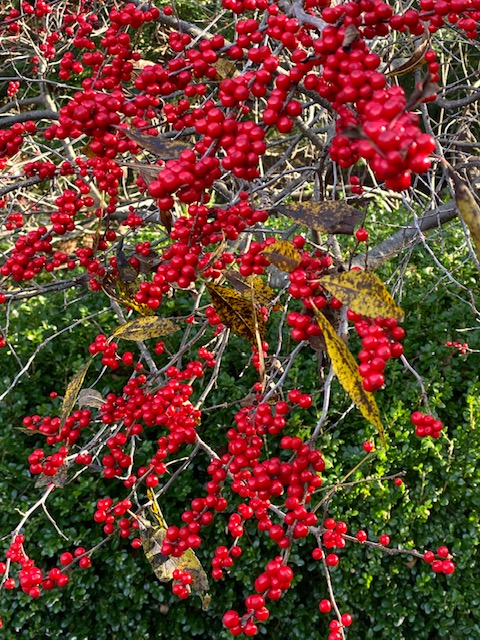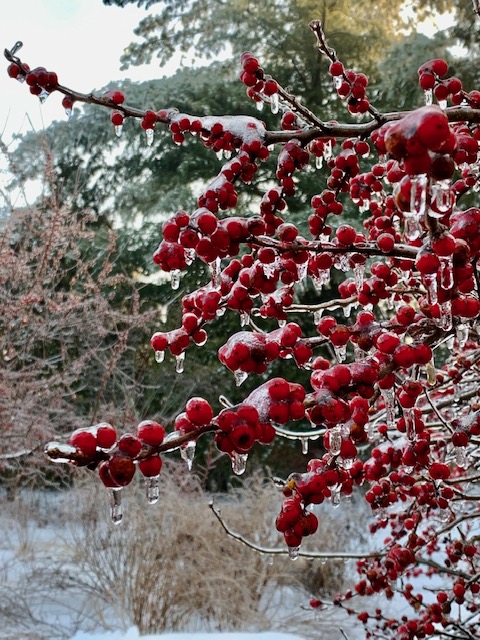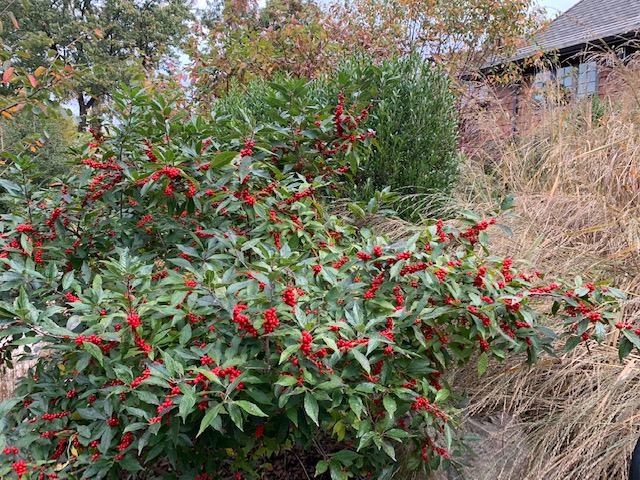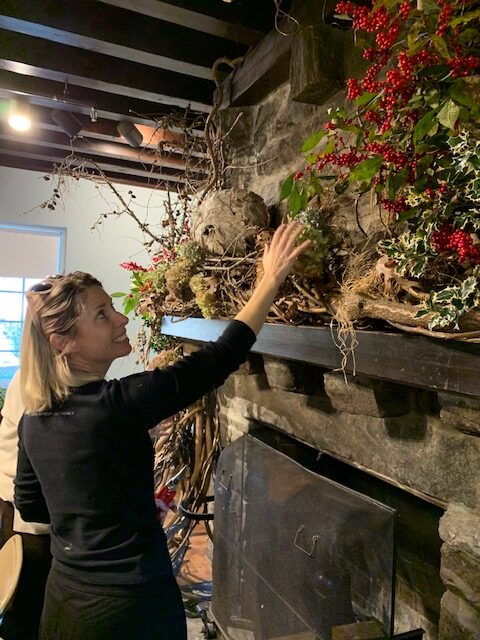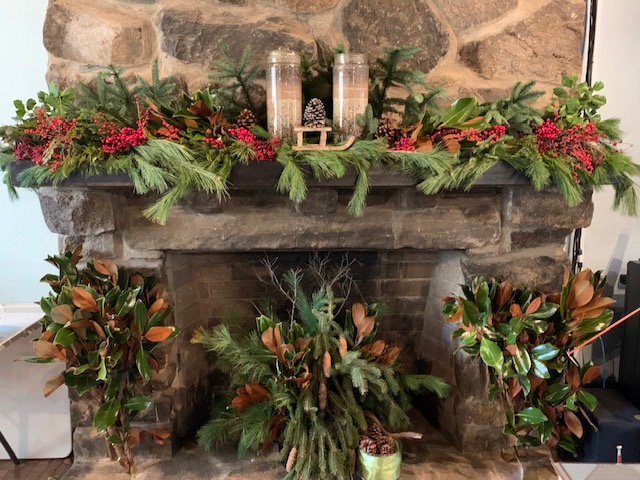Do you have a soggy situation in your yard: a low spot where water always puddles for a few days before drying up? If so, lucky you! You’ve got the perfect spot for some beautiful water-loving shrubs!
Rainstorms are becoming more frequent and more intense. Suburban lawns often have mushy patches that don’t really recover, even after the ground dries. Turf grass roots sitting in standing water are deprived of oxygen and soon die. You could spend hours – and dollars — aerating, re-seeding, or laying new sod only to see the same thing happen again in the next downpour.
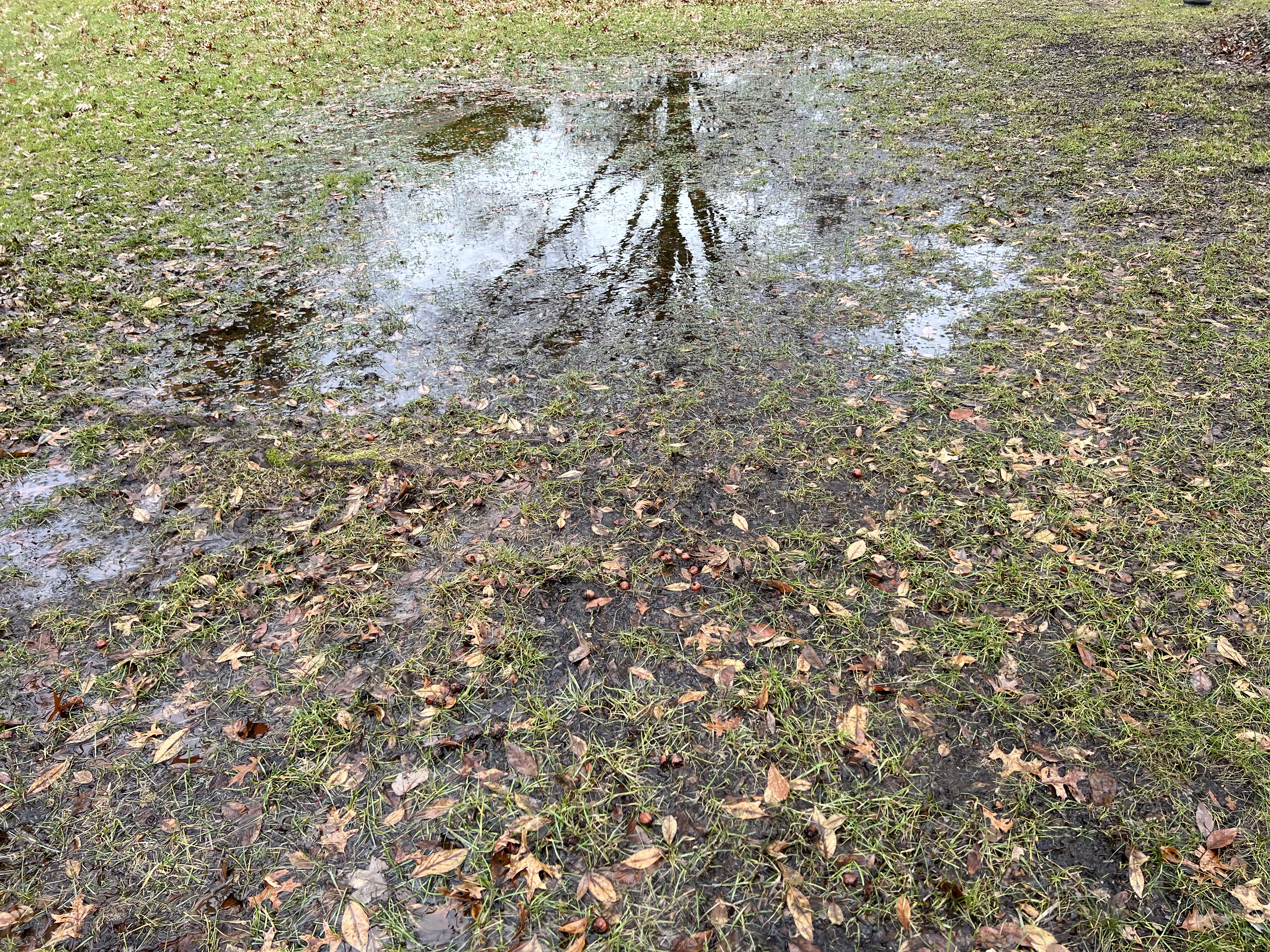
Or, you could plant a few native shrubs that would be happy to soak up that water! Some of our most desirable native plants evolved near ponds, streams, and in wet meadows. They can live in standing water for days at a time, and take up excess water that otherwise becomes mosquito-breeding habitat. Even better, because they are native to our region, they are winter-hardy and provide food for pollinators and birds.
It’s not hard to remedy a soggy area of lawn. You can plant right into the wet areas, even without removing any surviving lawn first. With the right plants, not much soil amendment is necessary, either. Dig a hole about the same depth and twice the circumference of the root ball of the shrub. Loosen the root ball if it is very tightly bound. Adding a few shovel fulls of compost and mixing it with the soil in the planting hole can help. But don’t plant too deep. Keep the crown of the plant just above the soil line. And give your new plant some company! More plants take up more water, reduce compaction, and improve soil drainage, which improves survival odds for all of the plants.
Visually, a cluster of water-loving shrubs is a big improvement over soggy lawn. Think about planting a group of 3 medium-sized shrubs, either all the same type or 3 different species, or perhaps a small tree and a couple of larger shrubs. A group of plants looks more natural, takes up more water, and provides valuable habitat for birds.
Assuming the spot is mostly sunny, and usually dries out a few days after a rainstorm, any of these great shrubs will work beautifully:
Buttonbush (Cephalanthus occidentalis)
Buttonbush produces really interesting flowers from early to mid-summer that last for weeks. The flowers look like 1½-inch white spheres and attract hummingbirds and butterflies. The leaves are large, glossy green, and make a gorgeous background for the flowers. After the flowers fade, hard spherical nuts resembling buttons develop and often last through the winter until birds harvest them.
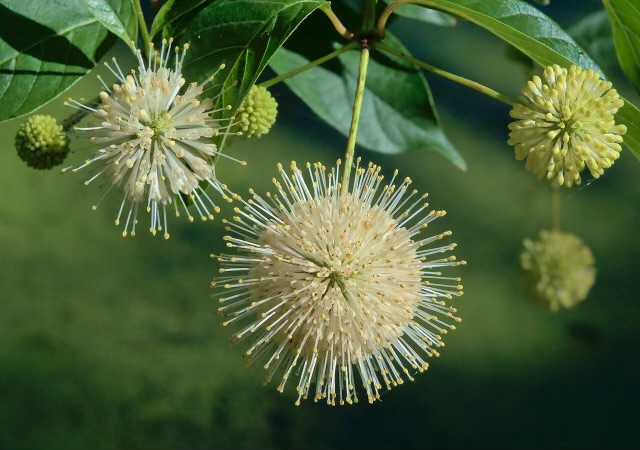
Photo: Lady Bird Johnson Wildflower Center
Native to swamps and streamsides from Canada to Florida and west to the Mississippi River, Buttonbush is hardy in Zones 4 to 10. In the Northeast, the shrub can reach 6 to 12 feet tall and 4 to 8 feet wide. In colder zones, the shrub may die back to the ground in winter and grow back to 3 to 4 feet in summer. Pruning is not necessary, but if you want to keep it a bit smaller, it won’t mind being pruned in early spring since the flowers form on new growth.
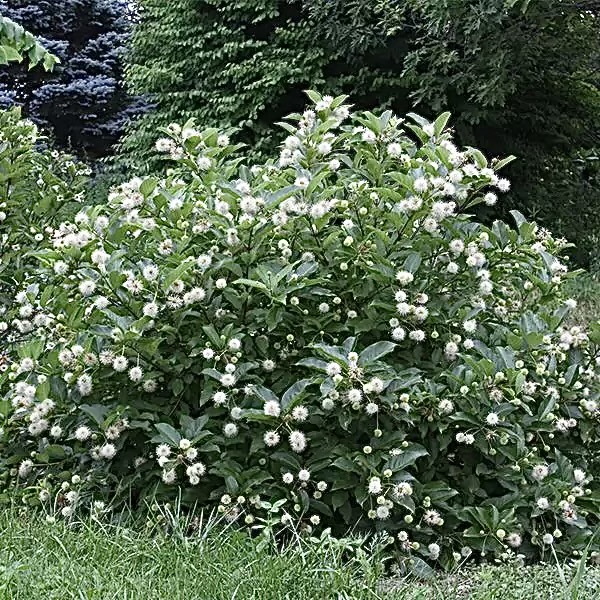
Photo: American Beauties Native Plants
Buttonbush loves wet soil, including areas that are often flooded with shallow standing water. It is generally deer-resistant once established, but young plants should be protected in the first few years. The shrub is happy in full sun or part shade.
Possumhaw viburnum (Viburnum nudum)
Also called Smooth Witherod, this shrub is one of our most attractive native plants for suburban landscapes. It will tolerate wet, boggy soil, though it does perfectly well in average soil as well, and is a great foundation plant. Native to woodlands, swamps, and thickets from Newfoundland to Florida, it grows 6 to 12 feet tall and 4 to 15 feet wide. It has shiny green leaves, big lacy white flowers in spring, and berries that turn colors from pink to blue to black. It also has spectacular fall leaf color. Possumhaw doesn’t need pruning and is not particularly attractive to deer. This plant works in almost any yard, but it is an ideal solution for a wet area.
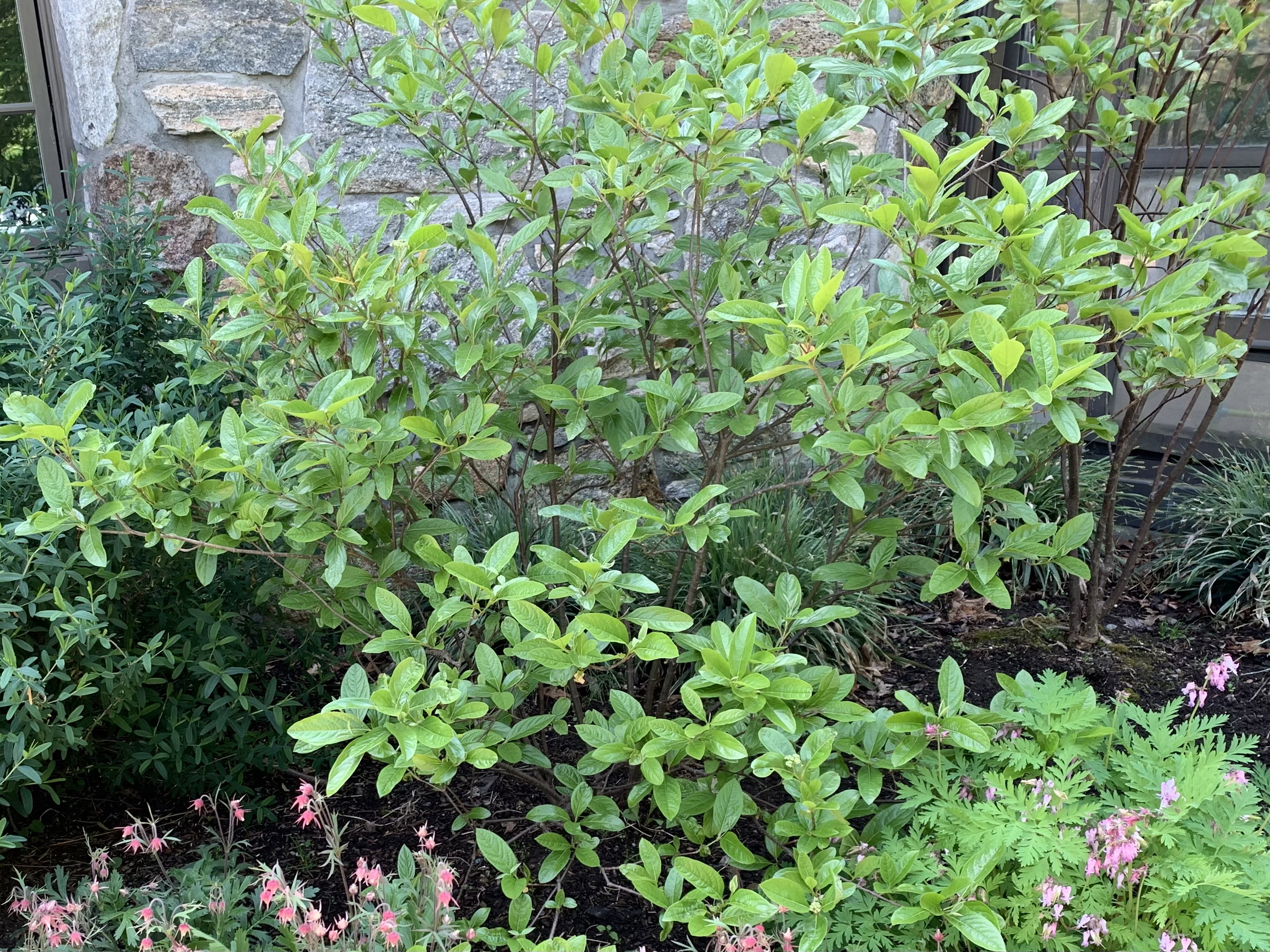

they ripen
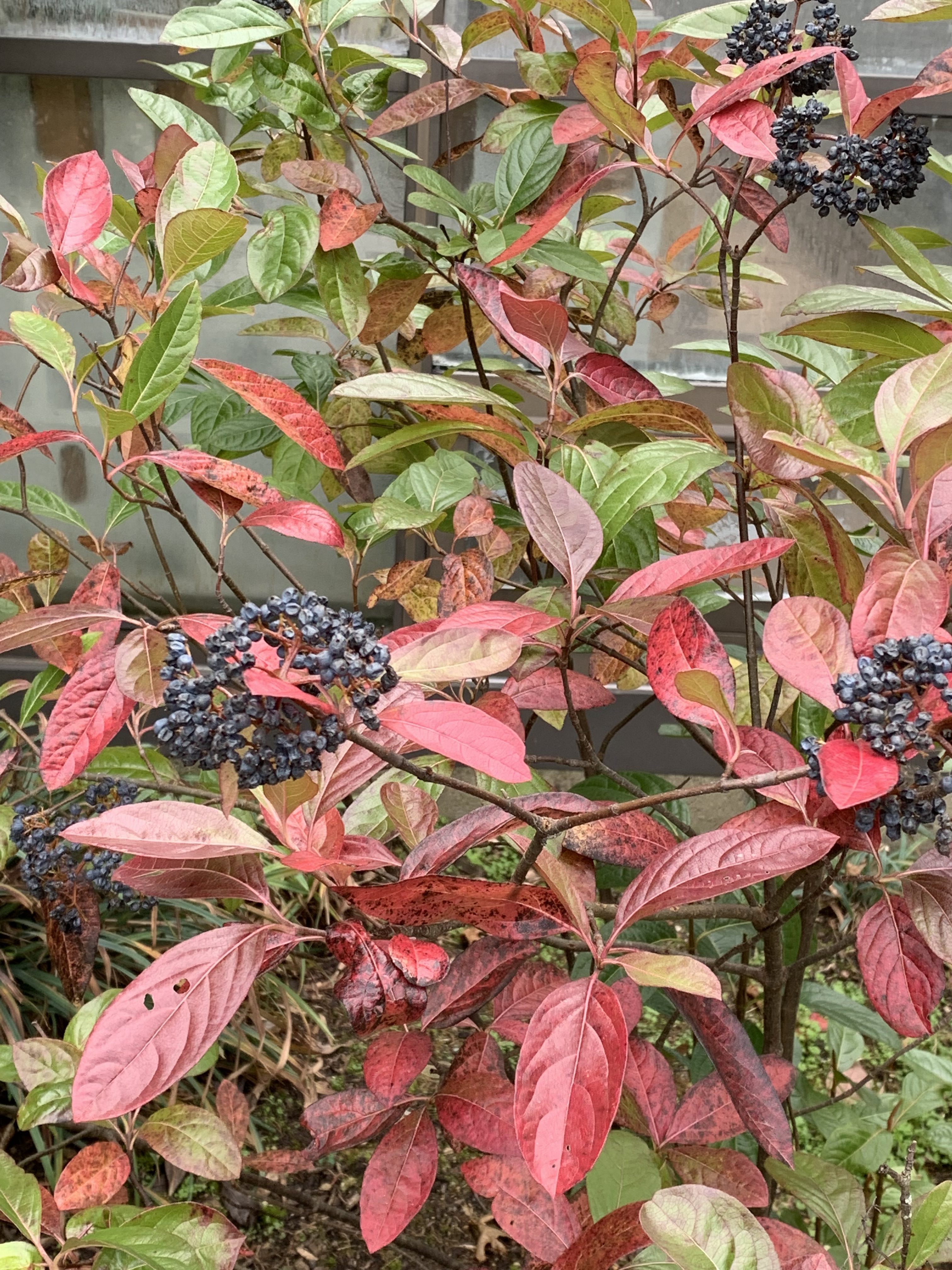
Winterberry (Ilex verticillata)
It’s hard to imagine a more useful landscape plant than Winterberry. It can live in standing water, but is also fine in average landscape conditions. It produces brilliant red berries in the fall that feed migrating birds.
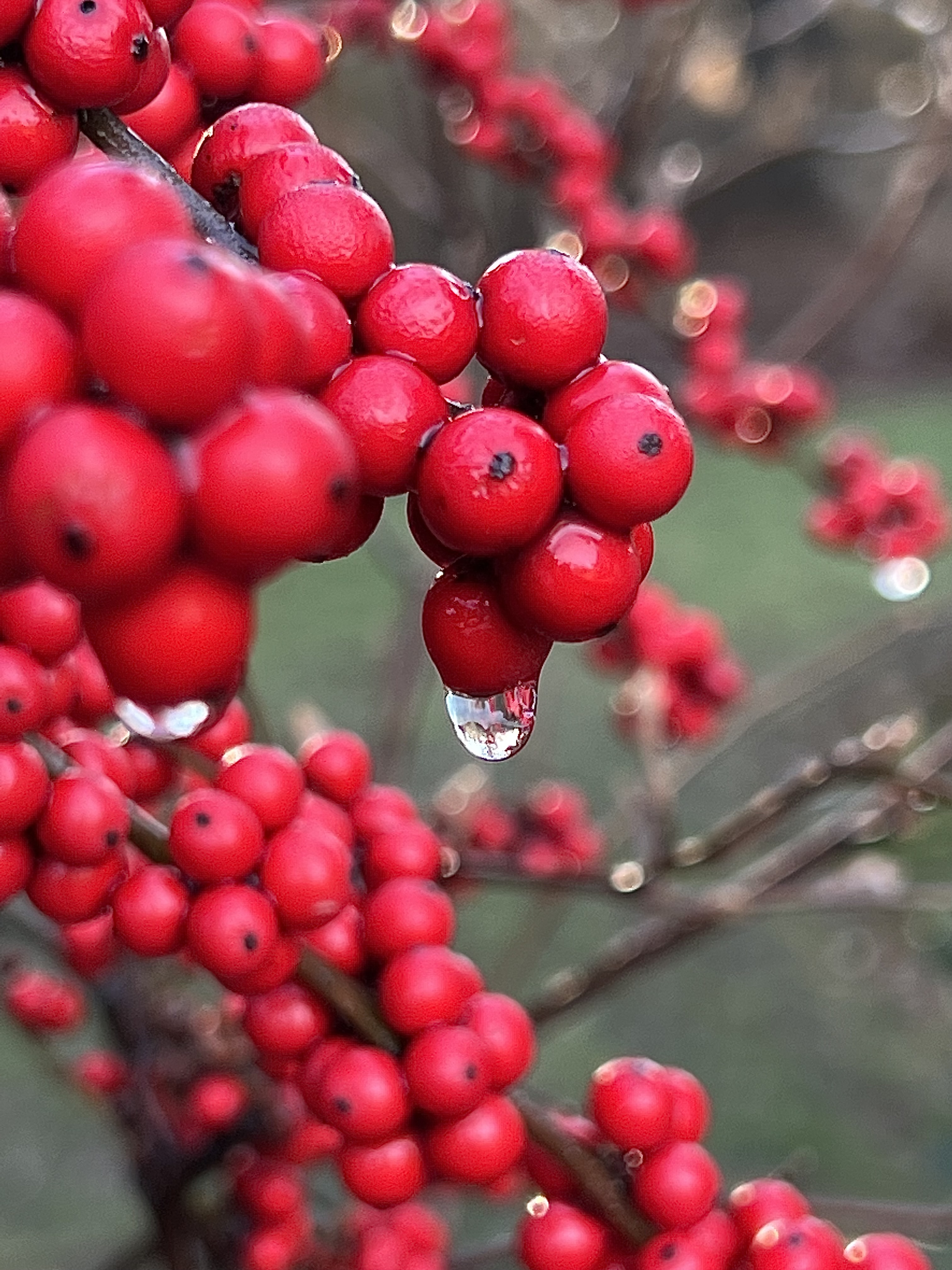
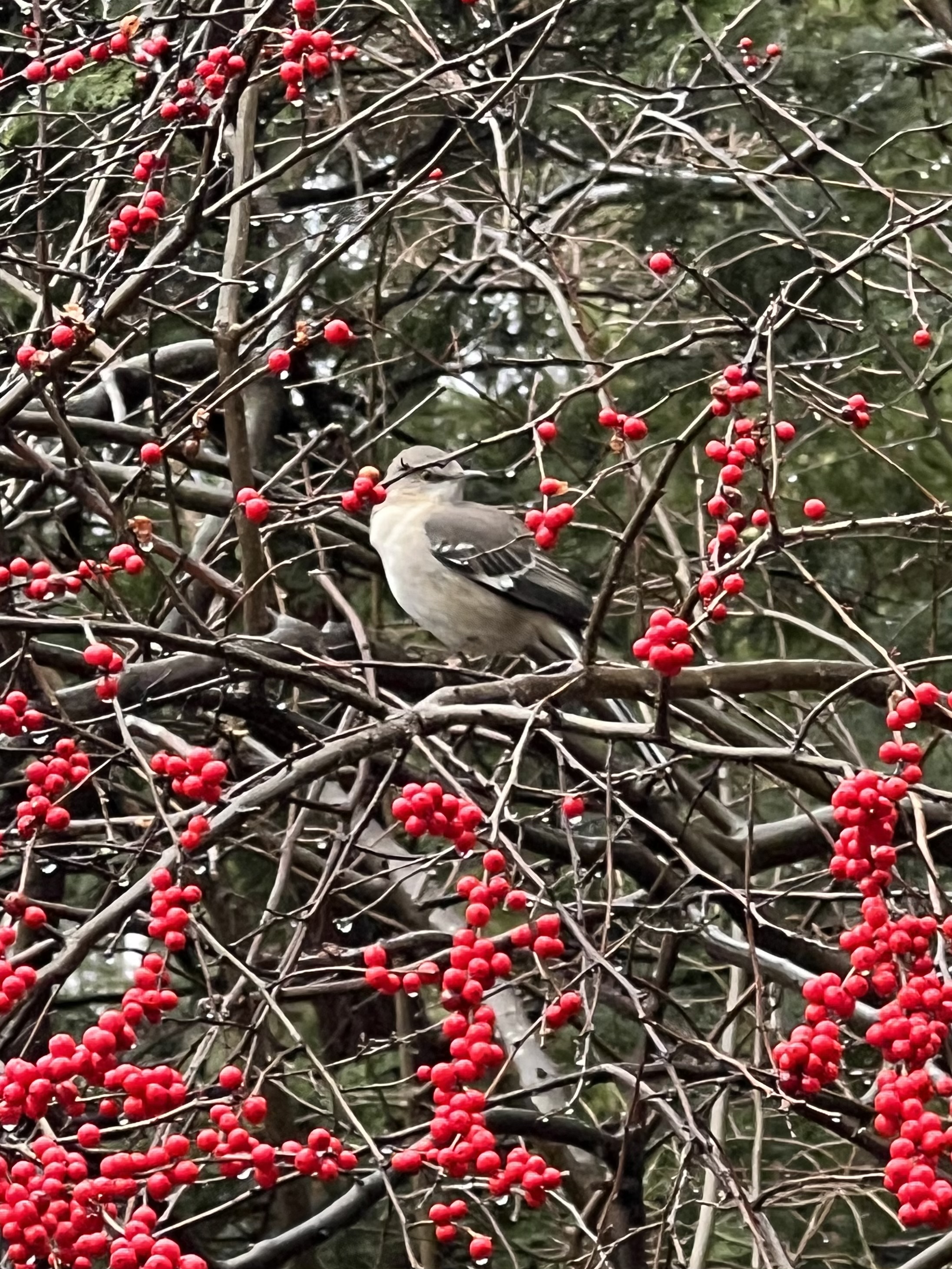
waxwings flock to Winterberries
Winterberry is very easy to grow in full sun or part shade. It needs no fertilizer or special care, and needs no pruning. The shrub has a loose shape and can grow 10 to 15 feet tall, but a cultivar called ‘Winter Sprite’ tops out at 3 to 4 feet. In fall, the leaves drop to show the brilliant red berries clustered along the stems. You will need both a male and female plant to produce berries, so ask your nursery for both. For more information on Winterberry, see an earlier post here.
Pussy Willow (Salix discolor).
Willows are wetland plants, and our native Pussy Willow is the most beloved of the bunch. As a multi-trunked shrub or small tree, 6 to 15 feet tall, Pussy Willow makes a great focal point where water collects. Plant it, then add two or three of the shrubs described above, and a formerly soggy mess will become your favorite part of the yard! For more information on this great little tree, read our earlier blog post here.
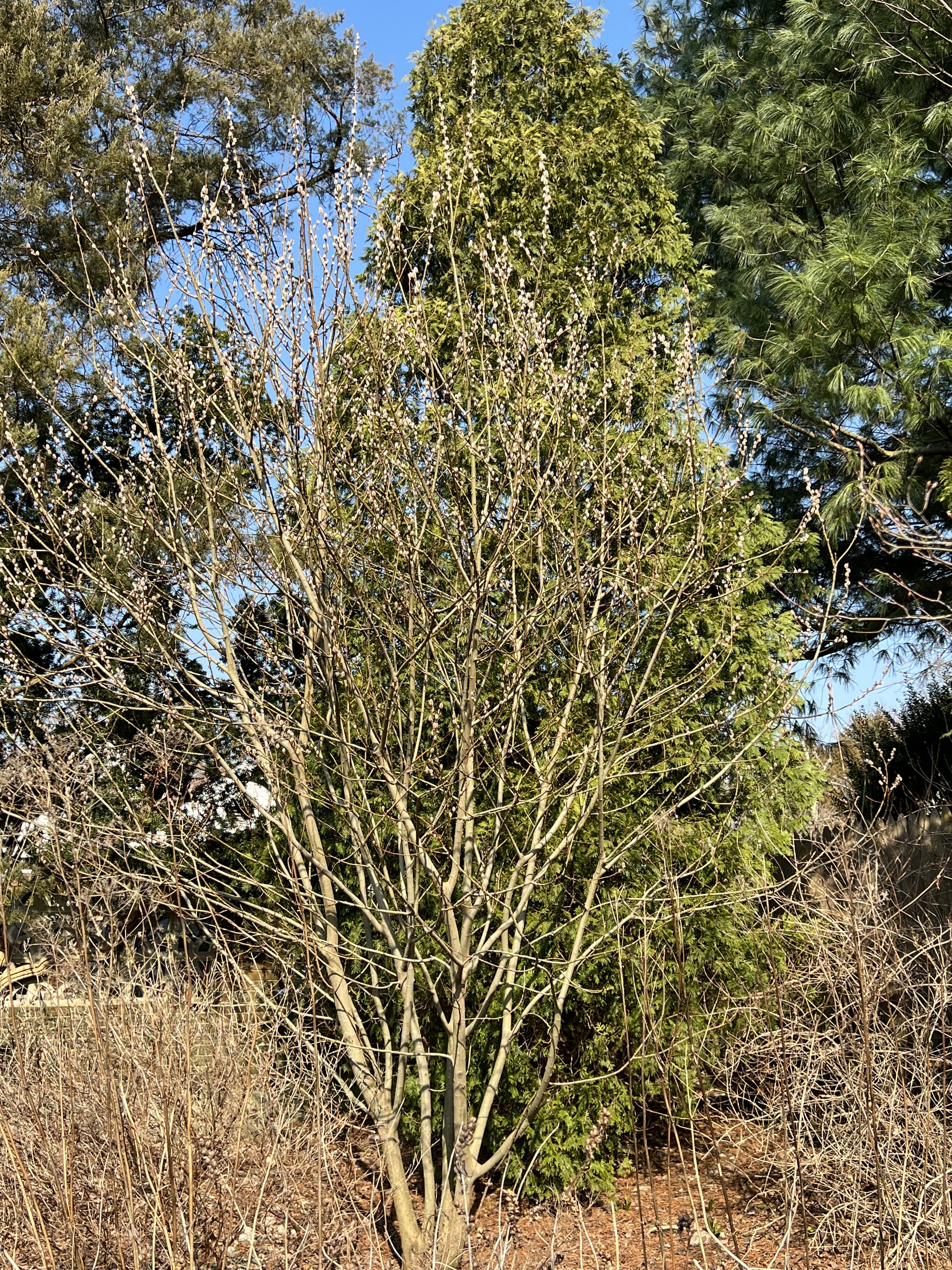
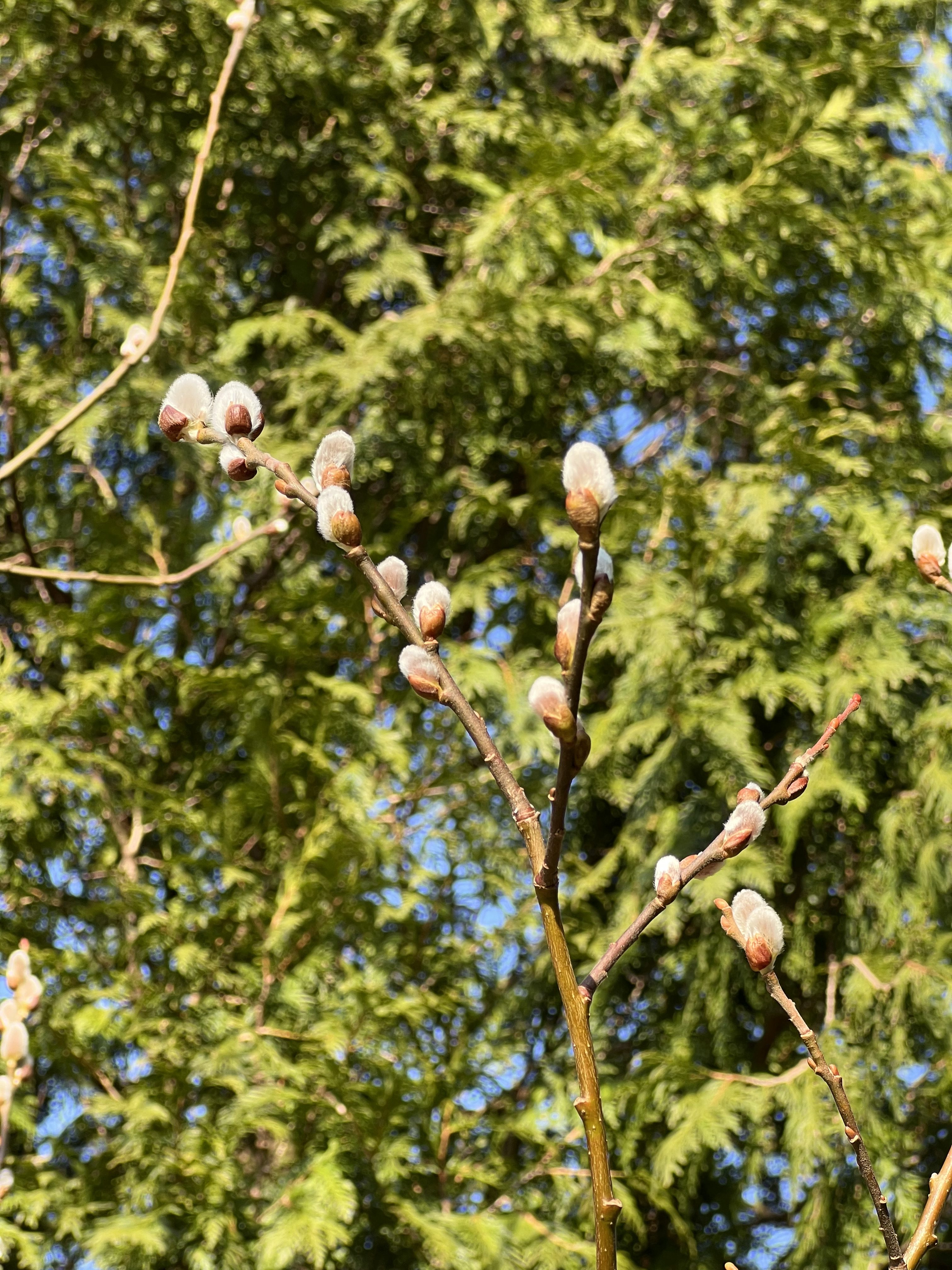
So, as you start dreaming about spring flowers, don’t forget about spring “showers,” which are more likely to be torrential downpours these days. Plan ahead for standing water and add some of these water-loving plants to your spring shopping list!
THIS BLOG IS WRITTEN BY CATHY LUDDEN, CONSERVATIONIST AND NATIVE PLANT EDUCATOR; AND BOARD MEMBER, GREENBURGH NATURE CENTER. FOLLOW CATHY ON INSTAGRAM FOR MORE PHOTOS AND GARDENING TIPS @CATHYLUDDEN.

